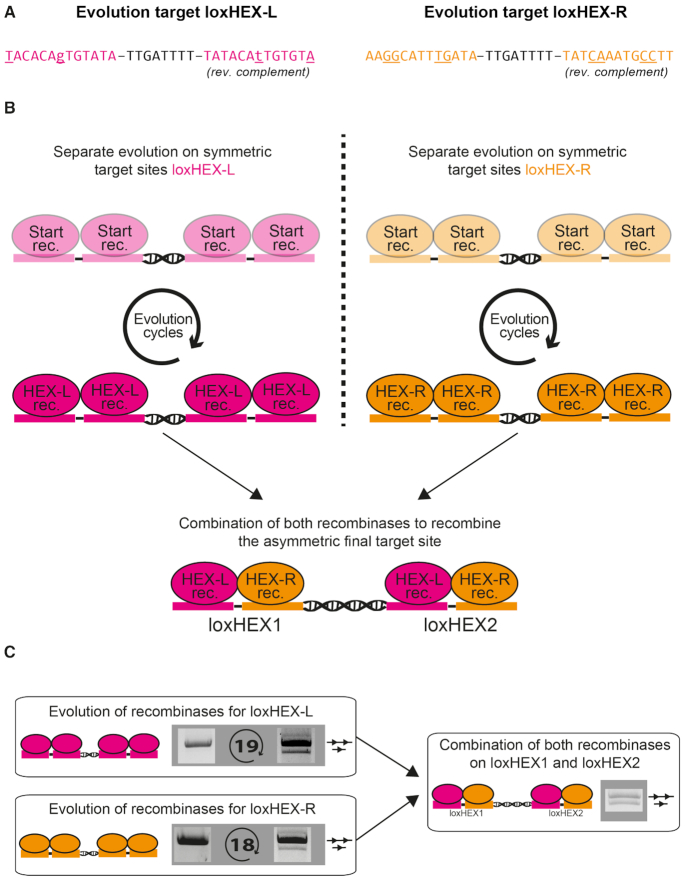Figure 3.
Substrate linked directed evolution of a recombinase heterodimer. (A) Sequences of the evolution sites loxHEX-L and loxHEX-R. The same color code as in Figure 2 is used, with asymmetric positions shown in lower case. The evolution sites are composed of either the left or the right half site of the loxHEX1/2 sites and the reverse complement sequence. Mismatches of the evolution sites compared to the starting library target site are underlined. (B) Scheme of the evolution process. Two independent evolutions were performed on the target sites loxHEX-L and loxHEX-R (left and right half site of the final loxHEX target site). The light color indicates a starting library with weak activity whereas the dark color represents a new recombinase library with good recombination activity for loxHEX-L or loxHEX-R. After the evolution process, the recombinases were expressed together as a heterodimer to recombine the final asymmetric loxHEX target sites. (C) Substrate linked directed evolution of recombinase libraries. The recombination efficiency of the first and last cycle is shown. Recombinases from the last cycle were coexpressed to recombine the final loxHEX target sites as a heterodimer. The upper band represents the nonrecombined plasmid (represented by a line with two triangles) the lower band represents the recombined plasmid (a line with one triangle). The number of evolution cycles is shown between the gel images. Combination of both libraries resulted in active heterodimers recombining the asymmetric loxHEX target site.

